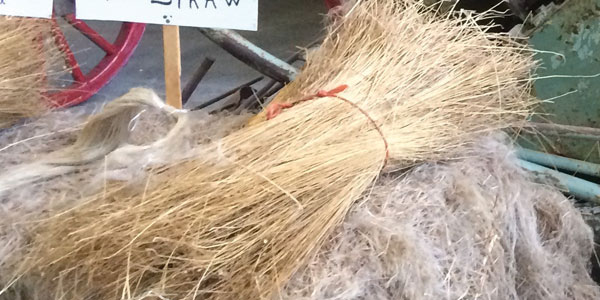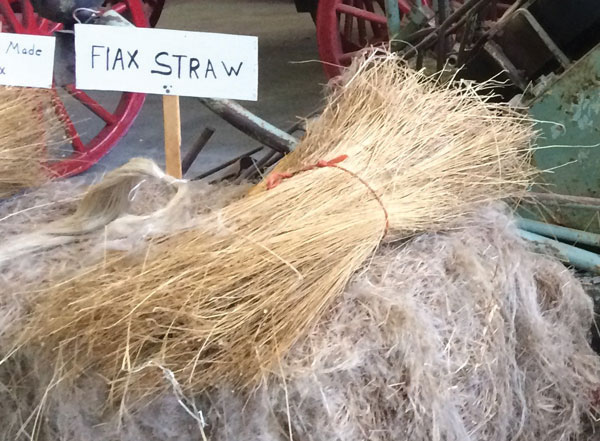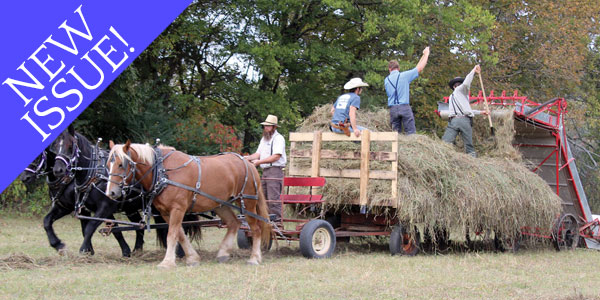
The Flax-Fiber Revolution
The Flax-Fiber Revolution
by Pete Cecil of Bend, OR
There’s a slow but steady movement afoot to revive the flax, Linum ustitatissmum, fiber industry in Western Oregon. This movement stands to have a significant impact on small and sustainable farms. Historically, the flax industry was a mainstay of the Pacific Northwest’s agricultural base. From the 1840’s through the 1950’s the Pacific Northwest was the hub of a thriving flax industry. The soil and weather were perfect for growing a superior quality crop that could be turned into high-end linen and yarn.

Flax is a native species of the Pacific Northwest and was widely used by Native Americans for basket weaving, rope making, and clothing. With the coming of Europeans the flax industry began to flourish around 1868 when numerous flax mills were established in the fertile Willamette Valley. These mills produced high quality linen, linseed oil used for paints and finishes, oil cake for cattle feed, as well as twine and rope, among countless other products. The Willamette Valley soon became known for superior flax-linen products. It is one of the oldest textiles in the world, known for its strength, durability, and quick drying.
By 1940, 18,000 acres were growing high quality flax in Oregon. Fourteen mills were involved in processing the material. During World War II Oregon’s flax industry was considered an essential war industry. After the war the loss of government contracts, declining foreign markets, high production labor costs, and the introduction of cheap synthetic materials quickly spelled the ruin of the Northwest’s linen industry. The last plant to close was located in Canby, Oregon which shut its doors in the mid-1960’s. Canada and China became the predominant producers of the world’s flax-linen. In the U.S. flax was considered a viable crop to be converted into oil and feed production, while the linen industry was quickly dismantled, leaving growers with no industrial base to process their fiber related raw materials. In 2017 only 4.5 acres in Oregon were dedicated to raising flax-linen – the last U.S. processing center is located in Maine. In the Pacific Northwest a small cottage industry has barely kept the craft alive.
Western Oregon’s mild climate and rich soils are still perfectly suited for the production of quality grade linen flax. Flax is an annual that requires low inputs, little irrigation after it’s established, usually needs little if any herbicides, and unlike many modern crops, the entire plant can be utilized as a raw material. Maturing in 90 – 100 days it lends itself to an early summer crop, and can be easily cultivated on small farms. It also fits in well with non-monoculture crop rotations. Flax production has recently been hailed as a possible alternative to the declining Northwest grass seed industry.

The greatest challenge to reviving the linen industry is the lack of surviving infrastructure. Fiber flax seed is currently in short supply. Dual purpose flax seed varieties that produce both high yield oilseed and quality fiber are being developed and refined. On the farm knowledge of flax fiber production has largely been forgotten. Harvesting equipment has not been manufactured in the United States for at least seventy years. The biggest hurdle to overcome is the lack of a processing plant located in the western U.S. A significant investment and commitment will be required to bring such a plant online. Despite the challenges, the Pacific Northwest is perfectly poised for a modern flax linen revival due to an increased consumer awareness of where our clothes come from and how they are produced! People are looking for an alternative to non-sustainable, high energy consuming fabrics. The shop local effort also fits in well with future flax production. The clothing industry is the second largest user of energy in the United States. Flax can offer a low input locally based alternative.
Currently it feels like a grass-roots type of effort, but change is on the horizon. A modern, local farm, local fiber movement is well underway. Angela Warters-Kahl and Shannon Welsh are directors of Fibrevolution, an organization dedicated to reviving a historic industry and helping make it grow and prosper again in Oregon. Working with local farmers, scientists, businesses, artisans, and partnering with Oregon State University they are laying the foundation for a bright future. Opportunities, as well as significant challenges face the revival of the flax linen industry. Angela and Shannon at Fibrevolution are taking these challenges head-on and are making steady progress in returning a high grade flax linen industry to the Pacific Northwest. The time is right (some would say long overdue) for a flax fiber-revolution that is positive for farmers, producers, consumers, and the environment.
For more information and to become involved, Fibrevolution can be contacted at:
www.fibre-evolution.com
email: fibrevolution@peak.org




